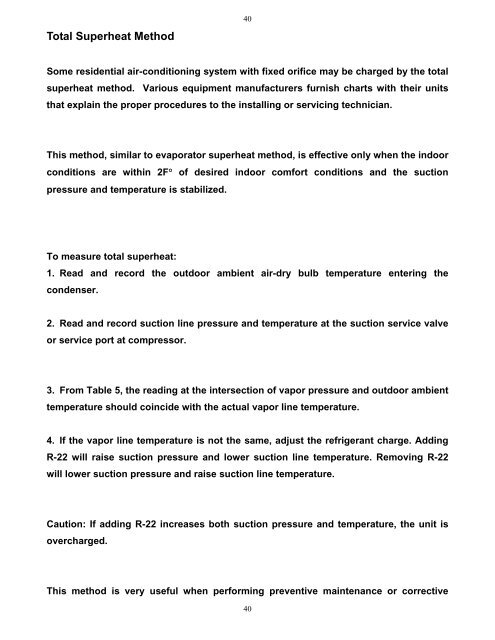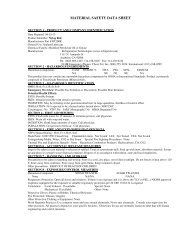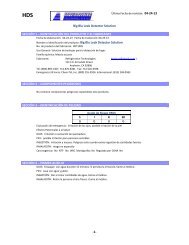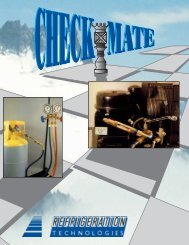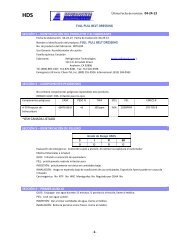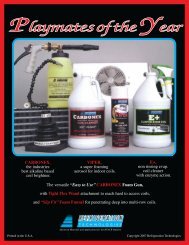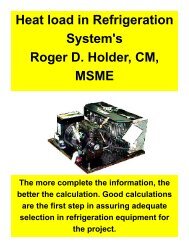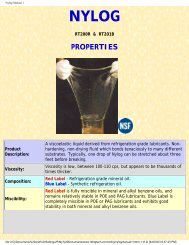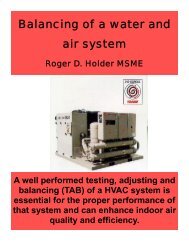Refrigeration Piping Charging Residential AirConditioning R
Refrigeration Piping Charging Residential AirConditioning R
Refrigeration Piping Charging Residential AirConditioning R
Create successful ePaper yourself
Turn your PDF publications into a flip-book with our unique Google optimized e-Paper software.
Total Superheat Method<br />
40<br />
Some residential air-conditioning system with fixed orifice may be charged by the total<br />
superheat method. Various equipment manufacturers furnish charts with their units<br />
that explain the proper procedures to the installing or servicing technician.<br />
This method, similar to evaporator superheat method, is effective only when the indoor<br />
conditions are within 2F° of desired indoor comfort conditions and the suction<br />
pressure and temperature is stabilized.<br />
To measure total superheat:<br />
1. Read and record the outdoor ambient air-dry bulb temperature entering the<br />
condenser.<br />
2. Read and record suction line pressure and temperature at the suction service valve<br />
or service port at compressor.<br />
3. From Table 5, the reading at the intersection of vapor pressure and outdoor ambient<br />
temperature should coincide with the actual vapor line temperature.<br />
4. If the vapor line temperature is not the same, adjust the refrigerant charge. Adding<br />
R-22 will raise suction pressure and lower suction line temperature. Removing R-22<br />
will lower suction pressure and raise suction line temperature.<br />
Caution: If adding R-22 increases both suction pressure and temperature, the unit is<br />
overcharged.<br />
This method is very useful when performing preventive maintenance or corrective<br />
40


